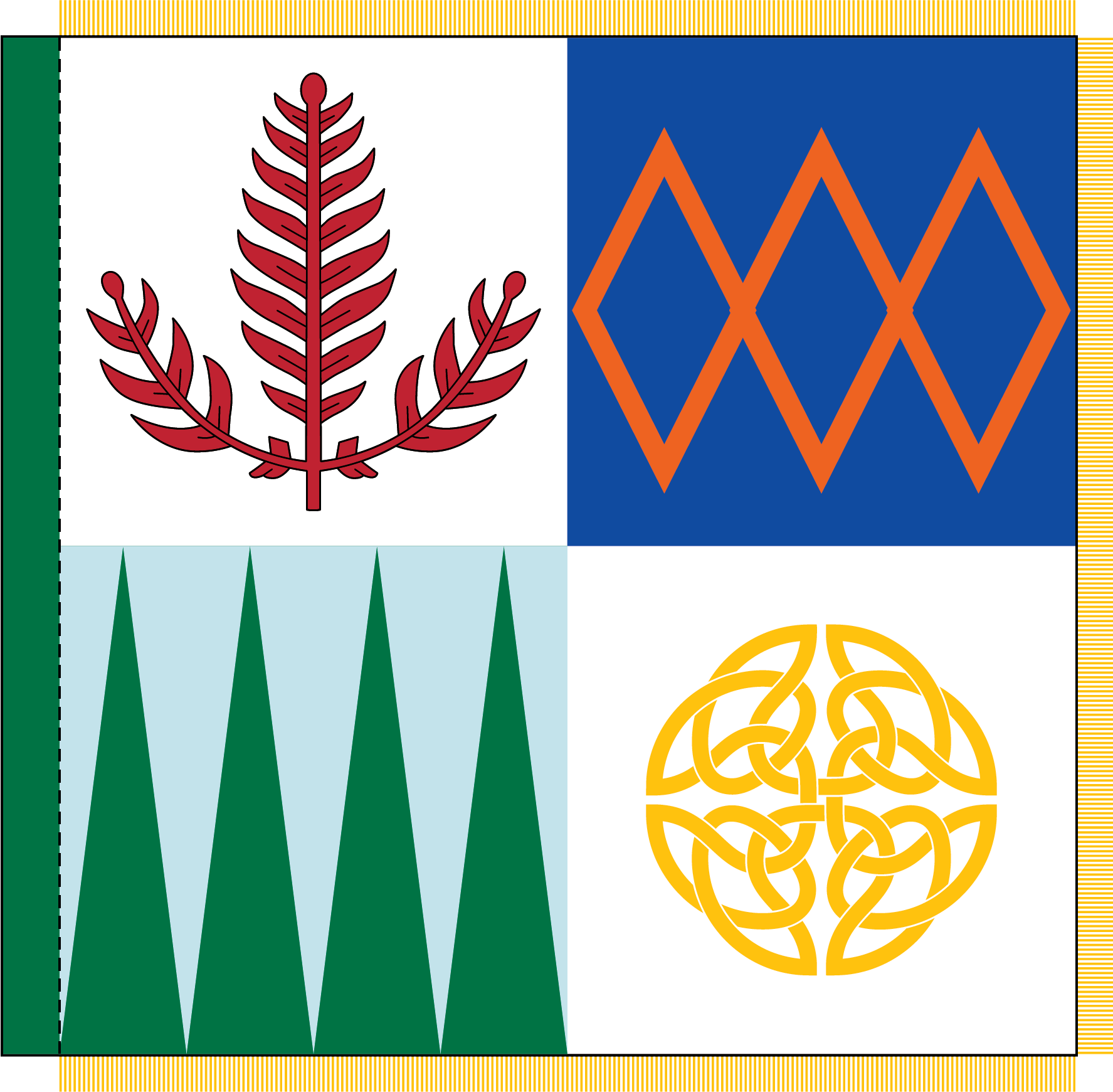Stanford’s newest school has a new flag for Commencement
A new school flag for the Stanford Doerr School of Sustainability will fly alongside flags from the six other schools at Stanford Commencement. The flag represents both the history and future of the school.
In 1967 chemistry professor Eric Hutchinson developed flags and crests for each of Stanford’s seven schools based on established academic symbols and colors. Now, a new flag and crest will join the other six at Commencement to honor the first class graduating from the Stanford Doerr School of Sustainability.

The design of the new school flag incorporates symbolic elements suggested by faculty, students, and staff. (Image credit: Courtesy Stanford Doerr School of Sustainability)
The new flag was developed with input from the entire school community, with drawings and suggestions submitted by faculty, students, and staff.
“It has been a year of milestones for SDSS, and our new school flag serves as an exclamation point on all we’ve been able to accomplish in the school’s first year,” said Dean Arun Majumdar. “By drawing on ideas and insights submitted by the school community, not only does our new flag honor our school’s history and the breadth of academic disciplines that defines us, it also holds true to our deep commitment to being inclusive and collaborative. This new flag now becomes part of our legacy, and I’m excited to have it serve as our banner at the school’s first Commencement ceremony later this month.”
Flag submissions suggested several consistent elements that are represented in the new flag:
- A reference back to Stanford Earth, Energy, and Environmental Sciences, and before that the School of Earth Sciences
- Blues and greens to represent the planet
- Circle shapes to indicate the Earth, sun, moon, other planets, or the circular economy
- Knots to indicate the interconnectedness of disciplines needed to address sustainability challenges
- Symbols that represent the schools and disciplines coming together to form the school
The new flag includes a redwood frond, which is common to all Stanford school flags. The triple redwood frond represents the organization, transmission, and generation of knowledge that takes place in the schools and on which the scholarly growth of the university depends.
The blue and green peaks and valleys reference back to the School of Earth, Energy, and Environmental Sciences, which had a similar design in red and black to indicate the mountains and the mines to which the work of that school was originally directed. With the blues and greens, the pattern now represents mountains and sky. The light blue color also represents education, and the green represents medicine – two disciplines that are now central in the school.
A dark blue and orange design is used in the School of Engineering flag to represent the growth of this discipline in response to the growth of science and of public needs. Orange is the color of engineering, and the dark blue represents graduate education. Incorporating that design from the Stanford Engineering flag represents the inclusion of the department of Civil and Environmental Engineering in the school, and the engineering expertise represented in other departments.
The circular knot is gold – the color of science – on a background of white – the color of arts and humanities. Together they represent the interconnectedness of disciplines required to understand our complex planet and the life it supports.
The flag will fly for the first time at Commencement when it is carried in by Nicole Travis, PhD in environmental Earth system science. A crest with related symbols will appear behind the stage at the ceremony. The flag for the School of Earth, Energy, and Environmental Sciences will hold a ceremonial place within the new Stanford Doerr School of Sustainability.
